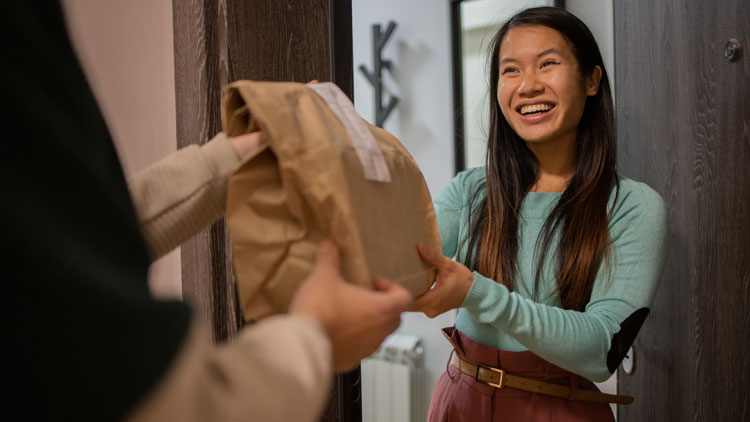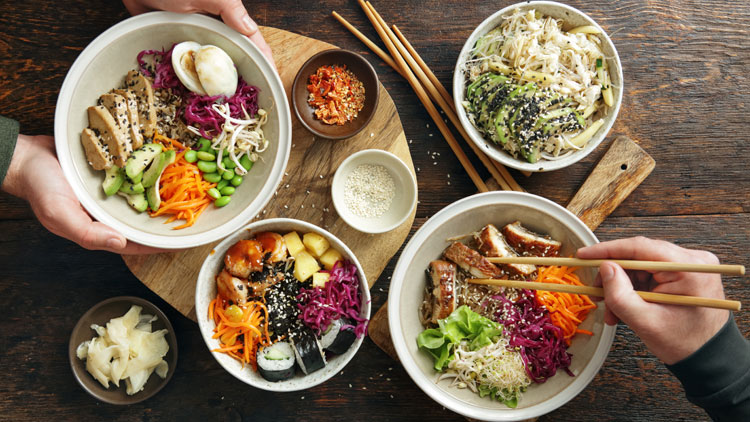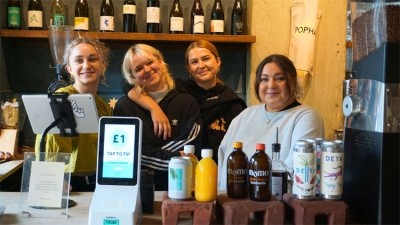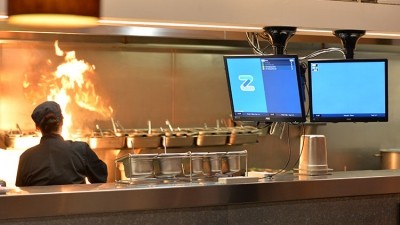Ask the experts: delivery
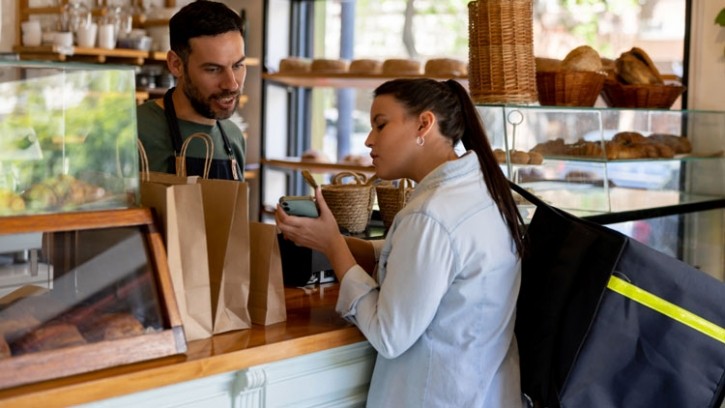
The pandemic has brought about a step change in how restaurant operators approach takeaway and delivery. Providing food for consumption off site is now a key part of the equation for the majority of restaurants with technology playing a central role in providing a frictionless ordering experience for the consumer. Technology is also making it easier for restaurant operators to process orders quickly and easily. According to most sources, eat-in sales at restaurants have been significantly down for much of the year as consumers tighten their belts. Takeaway and delivery is bucking this trend, however, with sales up on the previous year most months. According to CGA by NIQ’s Hospitality at Home Tracker, at-home sales channel now accounts for for just under 15p in every pound spent by consumers in the major branded restaurants contributing to the tracker. The growth of the delivery space and the necessity - in most cases, at least - to work with multiple delivery partners has given rise to systems that can manage multiple ordering channels. Such systems centralise order management, reduce the chance of order processing areas and provide an invaluable birds eye view. To get a further insight into how these systems work and what benefits they offer we spoke to UrbanPiper, a leading player within this rapidly evolving space.
What exactly do systems such as yours do and why should businesses that offer takeaway and delivery consider investing into them?
UrbanPiper aggregates all restaurant orders from diverse online channels such as food delivery platforms, online ordering channels, kiosks and more into a single dashboard and directly into the restaurant’s POS. By centralising order management, menu management and stock management in one place, UrbanPiper empowers restaurants to operate more efficiently, reducing the complexity that comes with managing orders from various channels. UrbanPiper minimises errors in order processing by creating a seamless and unified integration with the restaurant’s POS, reducing the likelihood of mistakes that can occur when managing orders from multiple sources. Kitchens can also leverage UrbanPiper’s order management dashboard, Prime, to manage all their order channels from one place. UrbanPiper also offers comprehensive analytics and business insights. The platform offers a bird’s eye view of the entire business, providing valuable out of the box reports, analytics and business insights that enable informed decision-making for restaurant operators. In essence, these benefits collectively enable restaurants to elevate their online operational management to unprecedented levels. This improved operational efficiency directly translates into superior business metrics for restaurants including increased order volumes and enhanced profit margins. Consequently, investing in an integration provider like UrbanPiper becomes pivotal for those looking to achieve accelerated growth in the competitive restaurant industry.
What should customers consider when choosing a delivery management system?
When selecting a delivery management system, customers should weigh several crucial factors. Suitability: Ensure that the system aligns with specific use cases and requirements, addressing the intended needs effectively. Reliability: Opt for a system with a consistently high level of uptime to guarantee a positive experience for end customers. Scalability: Choose a system capable of accommodating the evolving demands of a growing restaurant business, ensuring long-term viability. Affordability: Prioritize systems that facilitate sustainable business growth, offering cost-effective solutions that align with the budget. Availability: Opt for a system with responsive customer support, ensuring timely resolution of queries for a seamless experience. By prioritising these elements, businesses can make informed decisions that not only meet their current needs but also pave the way for sustained growth and customer satisfaction in the long run.
Content provided by UrbanPiper and Tevalis
Reduce order preparation time, eliminate errors, and improve staff efficiency
This seamless integration enables businesses to manage every aspect of their delivery channels with one comprehensive dashboard. All orders confirmed through UrbanPiper automatically get sent to the Tevalis EPOS and Kitchen Management Systems, meaning your kitchen staff can see delivery tickets immediately and start prepping the order straight away. Beyond streamlined order management, there are a number of other incredible benefits for restaurant operators. Management can stay on top of trends by making real-time changes to their menu, make cancellations a thing of the past by keeping track of stock, and stay ahead of the competition by analysing their performance across channels.This multi-platform integration extends to online commerce, kiosks, and order and pay platforms, meaning you’ll never miss a customer. Discover more benefits of Tevalis and UrbanPiper’s powerful partnership here.
What do operators need to consider when it comes to integration and compatibility with third party delivery services
When addressing integration and compatibility with third-party delivery services like Deliveroo, operators should focus on key considerations. Availability: Assess whether the chosen tech solution seamlessly integrates with all desired channels, ensuring comprehensive coverage. Usability: Evaluate if the tech solution offers features equivalent to those provided by the third-party delivery service natively, enhancing operational efficiency. Reliability: Confirm that the tech solution has official APIs integrated with the third party delivery service in question; this is essential to ensuring no order is delayed, missed or fails once the integration is live. Operators optimising integration and compatibility should carefully weigh these factors to ensure a seamless and effective partnership with third-party delivery services, enhancing overall business performance.
What do operators need to consider when it comes to integration and compatibility with their own restaurants systems?
When evaluating integration providers for restaurant systems, it’s crucial to assess whether they offer comprehensive end-to-end solutions. For instance, consider whether the integration empowers operators to oversee critical functions such as menu updates, order status tracking,stock inventory management (including stock-in and stock-out items) and the ability to toggle store availability on and off. Opting for an end-to-end integration streamlines operations by enabling operators to manage these processes directly from their point of sale. This not only eliminates the need for additional software but also significantly diminishes the potential for human errors in the overall management of these essential functions.
How did the pandemic change the takeaway and delivery space?
The pandemic saw a profound transformation in the takeaway and delivery landscape, rendering online ordering and delivery services indispensable for restaurants. This shift accelerated technological adoption and emphasised the importance of contactless transactions to address changing consumer preferences and heightened safety concerns. In response to the evolving landscape, businesses underwent a meticulous reassessment of financial sustainability, catalysing improvements in operational methodologies. Technology emerged as a cornerstone for progress, with integration providers playing a pivotal role. These providers streamlined operations by consolidating various aspects of a restaurant’s business into a singular, manageable dashboard. The increased reliance on technology not only optimised existing processes but also unlocked opportunities, allowing savvy restaurant operators to manage multiple brands from a single physical outlet. This strategic approach became a means for enhancing revenue potential, showcasing the adaptability and resilience of the industry in the face of unprecedented challenges posed by the pandemic.
What are the more recent trends in the space in terms of tech and logistics?
Two key trends have emerged: specialisation and integration. Specialisation is evident in the rise of specialists addressing specific challenges faced by restaurants, such as supply chain management, delivery channel integration, payment reconciliation, or third-party delivery rider management. This trend has led to the development of robust and highly-effective products tailored to meet precise needs. Simultaneously, the success of a restaurant operator today hinges on effectively harnessing various technologies. To facilitate this, there is a growing emphasis on integration between diverse tech providers. This integration streamlines operations, enabling restaurant operators to navigate the complexities associated with different aspects of their business more seamlessly. Overall, the overarching focus of recent trends in technology and logistics is to simplify the lives of restaurant operators. Whether through advancements in AI or more traditional technologies, innovations are aligned towards the common goal of enhancing operational efficiency and reducing the challenges.
Delivery and takeaway ordering is now nearly exclusively digital. How has that changed consumer expectations/behaviour?
The recent shift toward exclusively digital delivery and takeaway ordering has significantly altered consumer expectations and behaviour. Consumers now consider certain factors as essential requirements. Speedy deliveries: There is an increased expectation for speedy order fulfilment to meet consumer demand promptly. Attractive menus: Menus must be appealing, enticing customers to make selections that lead to satisfaction upon consumption. Compelling discounts: Restaurants need to stay agile, constantly reinventing with various promotional campaigns to offer compelling discounts that resonate with consumers. High availability: Consumer demands for convenience extend beyond regular hours, necessitating high availability day and night to satisfy their cravings. Omni-channel presence: To cater to diverse preferences, establishments must maintain a presence across a wide array of channels, ensuring accessibility and visibility in the digital landscape. These have become the bare essentials to succeed as a restaurateur today.
What more general tips would you give operators looking to succeed with takeaway and delivery?
To thrive in the realm of takeaway and delivery, operators should adhere to these general tips for leveraging technology effectively. Set clear goals: Define your objectives for employing technology in your operations to ensure a focused and purposeful implementation. Master the tools: Invest time in comprehending the full capabilities of the technology you choose. Train your teams to proficiently utilise these tools, maximising their potential. Streamline processes: adapt your existing processes to seamlessly integrate with the technology at hand, enhancing efficiency and optimizing the benefits of your investment. Regular reviews and refresh: Periodically assess the performance of your technology implementation. This ongoing review ensures that your resources are consistently and effectively utilized, allowing for timely adjustments and improvements. Stay ahead of the curve: Continuously monitor your competition, understanding their strategies to proactively position yourself one step ahead in the evolving landscape.
What technology or new functionality is coming down the tracks that could further shake up the takeaway and delivery space?
A few emerging technologies and functionalities are poised to reshape the takeaway and delivery space. These include: Drone and autonomous delivery: Advancements in drone and autonomous vehicle technology may revolutionize last-mile delivery, offering faster and more efficient order fulfilment. AI-driven personalisation: Artificial intelligence is expected to play a significant role in personalised customer experiences, predicting preferences, and tailoring menu recommendations based on individual behaviours. Augmented reality (AR) menus: AR menus could provide an immersive and interactive ordering experience, allowing customers to visualise menu items before placing an order. Voice-activated ordering: The integration of voice-activated technologies may streamline the ordering process, offering customers a convenient and hands-free way to place orders. As these technologies evolve, they have the potential to bring about substantial advancements in the takeaway and delivery space, offering new avenues for efficiency, personalization, and enhanced customer experiences.
